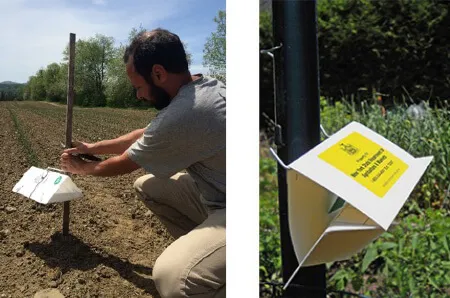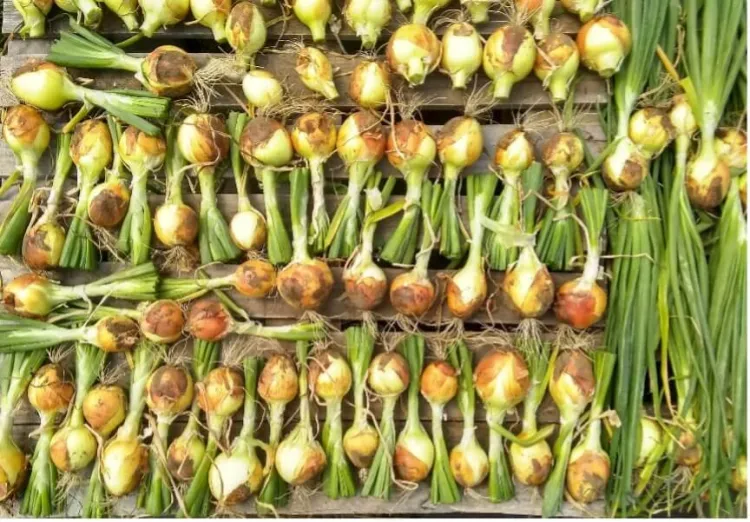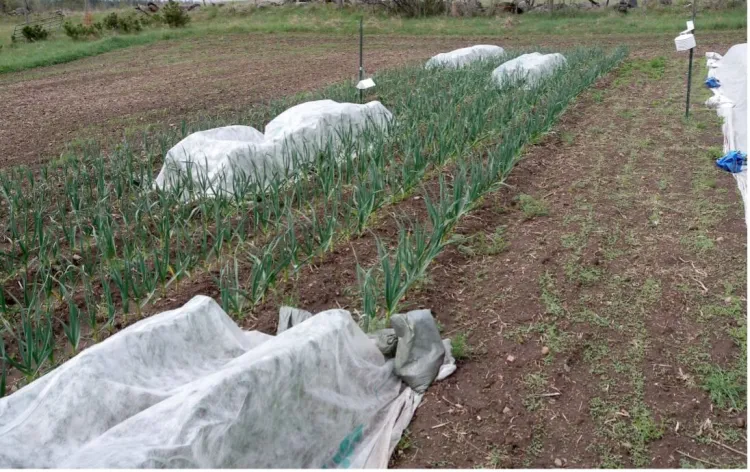Research is on-going to determine effective control strategies.
SCOUTING AND MONITORING
For any management tactic to be effective, proper timing is crucial. Leek moth flights and subsequent egg laying can be easily monitored using commercially available pheromone-baited traps. The resulting caterpillars can then be targeted at the proper time, and with the appropriate control tactic, using the information gained from monitoring and field scouting.
Pheromone traps can be used to determine peak flights of each generation. Pesticide applications can begin 7-10 days after adults are caught as eggs begin to hatch. Set out traps in early April to find adults as they emerge from overwintering sites.

INSECTICIDES
For an insecticide to be registered in the United States, the product must be labeled for the crop and the insect pest. Prior to any pesticide applications, it is imperative that you check with the appropriate entity in your state to be sure that the product is allowable. Check out The Kelley Registration System or National Pesticide Info Retrieval System for State-specific information regarding pesticide registration in your area.
BIOLOGICAL CONTROL
There is considerable interest in finding biological control agents that can be effective in controlling leek moth.
The commercially available parasitoid wasp Trichogramma brassicae has been shown to reduce leek moth caterpillar damage by more than 50% in allium fields when releases of the parasitoid were made during the previous adult moth flights.
One parasitoid, Diadromus pulchellus (Hymenoptera: Ichneumonidae), from Europe has been released in Canada.
Additionally, the parasitoid Conura albifrons (Walsh) (Hymenoptera: Chalcididae), a native of North America, has been recovered from leek moth in New York.
Generalist predators may also be helpful in suppressing leek moth populations.
Cultural/Preventative
There are several cultural controls that have been recommended for control of leek moth, including row covers, removal of larvae from the plant, rotating to a non-host crop (i.e. non-Allium crop), and removal of host plant debris at the end of the season to minimize adult overwintering.
Leek moths lay their eggs on leaves of alliums, we showed that “topping” as a strategy to remove larvae before they can move into allium bulbs and cause damage during curing or long‐term storage is effective for some allium crops, and this doesn’t negatively impact the quality of bulbs while in storage.

Floating row cover is widely used by Canadian garlic growers to effectively manage leek moth. Depending on the production system, it can be very effective to manage leek moth in other alliums as well.

Fact Sheets
- Leek Moth Fact Sheet 2022 (PDF) — University of Vermont Extension
- Leek Moth Fact Sheet 2011 (PDF) — Cornell Cooperative Extension
- Leek Moth — A Pest of Allium Crops (revised August 2009)
Training Material
- Leek Moth: Background, Biology, and Occurrence
- Powerpoint (5MB File)
- PDF (318K)
- Leek Moth Damage Examples.
- Poster for fairs and/or displays (PDF)
- Poster 2: Leek Moth: A New Invasive Insect Pest of Allium Crops (PDF)